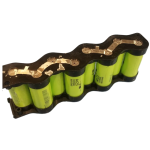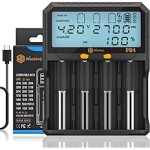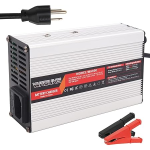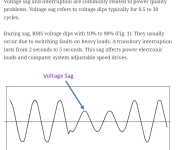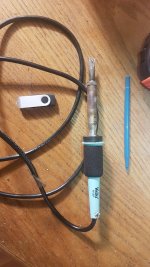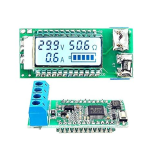Didn't you mean to also say "discharge to 3.1v" using the WISEBLUE? Why do you need to charge to only 3.1v instead of 3.65v when doing a capacity test via 'charging' as opposed as doing a capacity test via 'discharging' ? Mosgt capacity testing is via discharging to simulate the discharge capacity while ebiking.
With your 4s modules no greater variance than 100mV should be possible with your used 4s 2p modules. Hopefully after discharge all 2p4s modules will be within 100mV of each other assuming you have manually bottom balanced all four 2p 'duos' within 25mV of each other before charging or top balancing within 25mV of each other before discharging.
Because most 1865/2170 commercial battery [inexpensive] BMSs use resistance discharge balancing which doesn't begin until the battery is nearing a full charge (say 4.10v). Some less expensive 1865/2170 Chinese batteries only use a BMS for over and under voltage protection (without any balancing feature for the p groups). Which should suffice assuming all the cells are A grade and the owner doesn't abuse the battery with too much continuous maximum discharge (like a prolonged hill climb at full throttle) with little pedal power assistance.
Right (each.2p duo). Also should have said 25w not 250w for resistance discharge testing. Use a 12v auto taillight bulb. I'm going to order a couple to check out (in case one is returned if faulty or keep as a spare) ...
www.amazon.com/Digital-Lithium-Battery-Capacity-Resistance/dp/B0981DHDJG
NOTE: Just went back (correcting typos) and hopefully further clarification.
from what i understand the wiseblue cannot stop at 3.1v but b6 can. my plan is to do capacity test (i dont know yet how to do it but ill learn it when time comes) i do beleive if it is your questions that the capacity test is done with 3.65v yes . Is the capacity test done when charging or discharging i do not know yet.
But i aim at:
after having done the capacity test , the b6 can bring the cells to 3.1v. can you confirm me itcan do that possible?
when reading your paragraph :
@An active equalizing balance board will balance at bottom, middle or top when the voltage variance of all the p-groups is more than 100mV and will stop balancing when variance is no more than 100mV.@
a question comes to my mind and it is . when all the cells will have been brought to 3.1v with the b6 charger, can i install the bms wire at that moment or do i need to do an additionnal step of using a active balance board that would make sure that they are to even voltage. maybe that is what you are advicing me to do , im not sure , i have never used an active balance board.
can we set the active balance board to a specific voltage or it chooses the voltage by him self.?
If it chooses the voltage by itself, how many cells can it handle at one time? 16s and 2 cell in p so 32 cells tolat? do you have a link of a active equalizing balance board affordable that would do the job.
is the active equalizing balance board only necessary for the situation where i would balance them at 3.1v(flat curve) or is it also necessary to use a active equalizing balance board if i balance the cell at 3.65v (not a flat curve)?
Could you tell me more about the reasons why to advice me to balance it at 3.1v ? You talked about the bms wire but iwould like to understand the why and if there are other reasons.
how do i what you talk about in this paragraph?
#With your 4s modules no greater variance than 100mV should be possible with your used 4s 2p modules. Hopefully after discharge all 2p4s modules will be within 100mV of each other assuming you have manually bottom balanced all four 2p 'duos' within 25mV of each other before charging or top balancing within 25mV of each other before discharging.# you talk about a bottom balance but i thought you said to balance at 3.1v.. i feel confused .
i do intend to buy a bms made for lifepo4 and that has the ability to start balancing a a voltage i can set up (so that it stills ballance even if i dont do full charge.
why would i need to make a discharge device like using a toaster or light bulb? idont understand why you bring this idea. could you clarify?
ps you wrote 4.15-4.20 volts to 3.10 or 3.00 volts but the cells are not li ion regular, they are lifepo4.
by the way when you use the expression#active equalizing balance board# do you mean a active balancer or is it a different device. I dont know yet if i will add a active balancer once the battery is assembled in the battery since people told me it drains the battery. maybe that once the battery is assembled the bms balancing capacity will be sufficient? i dont have enough xp to judge on that . Also i seems that having a active balancer could leave me unaware of some problems that could emerge further down the road like if after x cycles a cell becomes bad.
thanks


